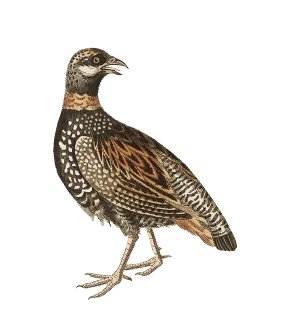Grey partridge
The partridge inhabits the middle latitudes of Europe and western Asia. It is not found in the southernmost part of Europe and is still widespread in the north, often in southern Sweden, Norway and Finland.
In Slovakia, it is most abundant in the southern lowland areas, but especially in the West Slovakian lowlands, while its density is much lower in the East Slovakian lowlands, although it has good living conditions there as well. It also occurs in the hills and foothills up to an altitude of 850 m, but only in very small numbers above that.
Partridges in general are stocky compact medium-sized birds with short wings, spurless legs, a nondescript tail, and mostly dull dense plumage. The cock and hen are of the same size. The partridge reaches a weight of about 0.40 kg. The partridge is grey-brown on top, brownish-grey underneath, with many spots and stripes. The rooster has a horseshoe-shaped dark spot on the breast, but an old hen may also have this. A reliable sign to distinguish the two sexes is the pattern on the wing trusses.
Partridges favour semi-desert grasslands, montane meadows, open temperate grasslands, windbreaks, scrub belts and agricultural landscapes.
Partridges feed on both plant and animal foods. After hatching, the young feed almost exclusively on insects and other small animals. Partridges prefer a varied rotation of agricultural crops in smaller areas for food diversity. They feed at dawn and dusk, but by pecking rather than burrowing.
Partridges live monogamously. They form pairs in late February as winter begins to ease and winter flocks break up. When it gets cold again, individual pairs of partridges will temporarily join together to form flocks. They begin to fledge in late March or early April. The hen lays 16-23 eggs in a shallow hole, which she only lightly lines with dry plant pieces. The hen sits on the eggs alone for 23-25 days. The rooster may help during the hatching period, otherwise he is nearby and watches out for danger. When danger is imminent, the hen feigns injury, thus distracting attention from the chicks. Young chicks are guided by both parents. If the hen dies, the rooster even raises the young himself.
The greatest damage to partridge populations is caused by mowing forage crops and the use of biocidal sprays used to protect agricultural crops.

